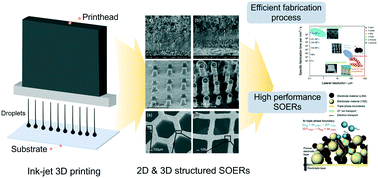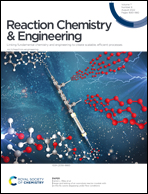Inkjet 3D-printing of functional layers of solid oxide electrochemical reactors: a review
Abstract
Conventionally, components of solid oxide fuel cells and electrolysers are fabricated by die pressing, tape/gel casting, injection moulding, etc., using metal oxide particulate dispersions with binders and other additives, followed by sintering at high temperatures. Such processes require cycle times of hours to days, and are materially wasteful and energetically inefficient, making them costly and less environmentally benign. Their limited ability to fabricate more complex geometries than conventional planar and tubular structures constrains reactor designs. Hence, herein we review 3D inkjet printing the functional layers of solid oxide electrochemical reactors, as it can achieve reproducible geometries and microscopic resolution feature sizes, thereby minimising material waste, but compatible with manufacturing processes. The principles of inkjet printing and formulation of suitable precursor colloidal dispersions (‘inks’) are overviewed, followed by a summary of the literature on inkjet-printed solid oxide electrochemical reactors, covering ink formulation, reactor fabrication and their electrochemical performances in fuel cell and electrolyser modes. Whereas electrodes have been 2D printed with composite inks of two particulate phases, their performance was limited significantly by low porosities. Fabrication of 3D electrodes with reproducible, pre-designed architectures has been reported for less than a decade, so the full potential of 3D inkjet printing has yet to be realised. Finally, we discuss how the challenges limiting this technique: increasing spatial resolution, controlling porosity, and 3D structure resolution and fabrication, are expected to be met.

- This article is part of the themed collection: Energy Frontiers: Electrochemistry and Electrochemical Engineering


 Please wait while we load your content...
Please wait while we load your content...